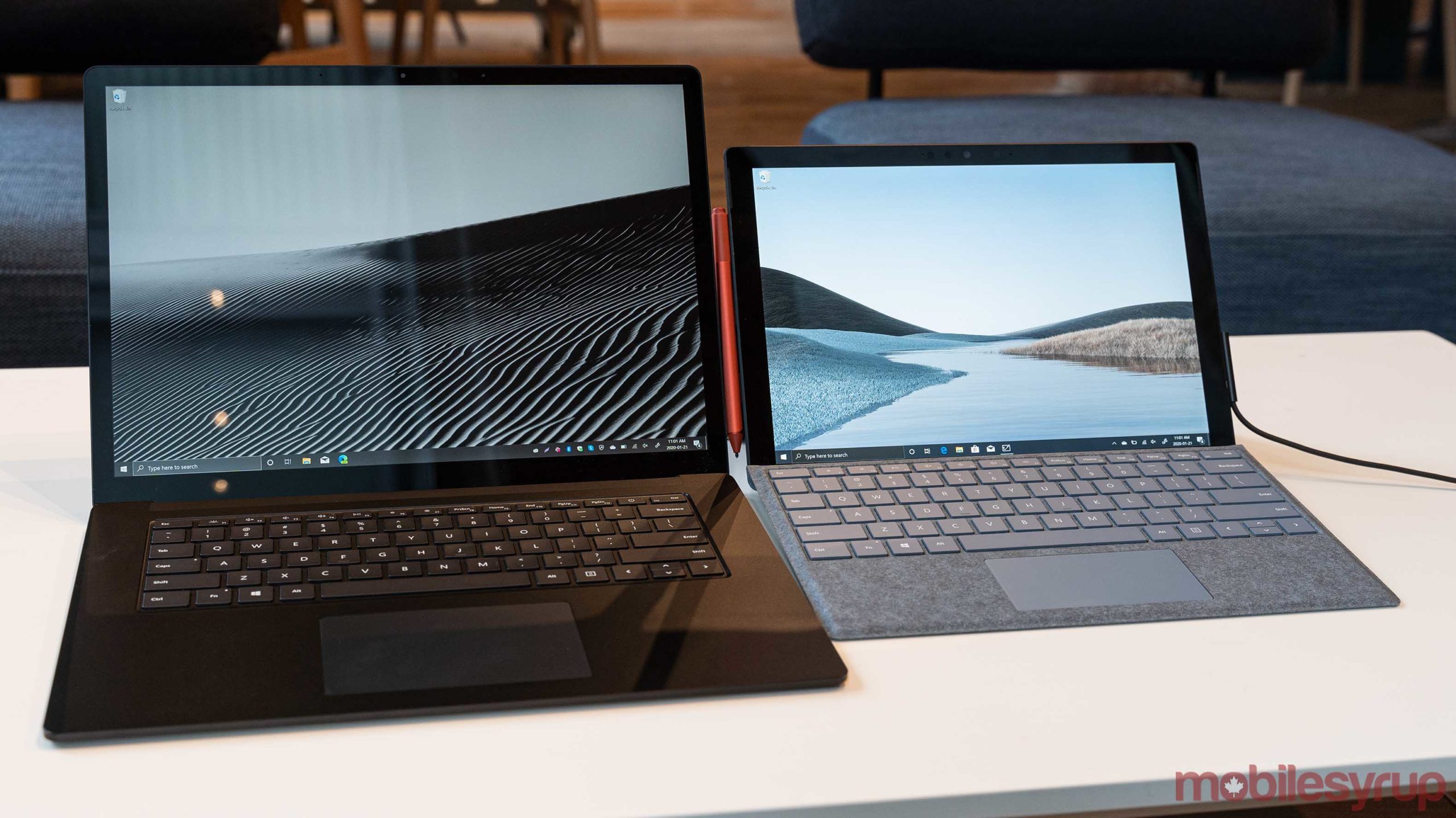
Microsoft’s 2019 Surface lineup is simultaneously one of the most interesting and least exciting in years thanks to a slew of new devices.
On one side, there’s the exciting new Surface Pro X, which represents a significant step forward for Microsoft and for the Surface line. Further, the upcoming Surface Neo and Duo are Microsoft’s most ambitious Surfaces yet.
On the other side, we have the tried-and-true Surface Pro and Laptop lines. These were, unfortunately, the less exciting Surface products to come from Microsoft last year.
Microsoft sent us a Pro 7 — complete with the fancy new red Surface Pen and Type Cover — along with the new 15-inch Surface Laptop 3. I tested them for a few weeks last year — if you’re wondering why this review is only going up now, see the author’s note below — and there’s not much to say. The Surface Pro 7 is good. The Surface Laptop 3 is also good. That’s about it.
This time around, Microsoft made some tasteful additions that improve the overall experience of the Surface Pro and Laptop. However, there’s nothing these new devices do that drastically changes the experience from their predecessors. Further, in the shadow of what’s to come from Microsoft, it can be tough to see the value in the Pro 7 and Laptop 3.
But don’t get me wrong; these are excellent computers, with some exceptions. Read on to find out what makes the new Surfaces laptops you should (or shouldn’t) buy, starting with the Pro 7.
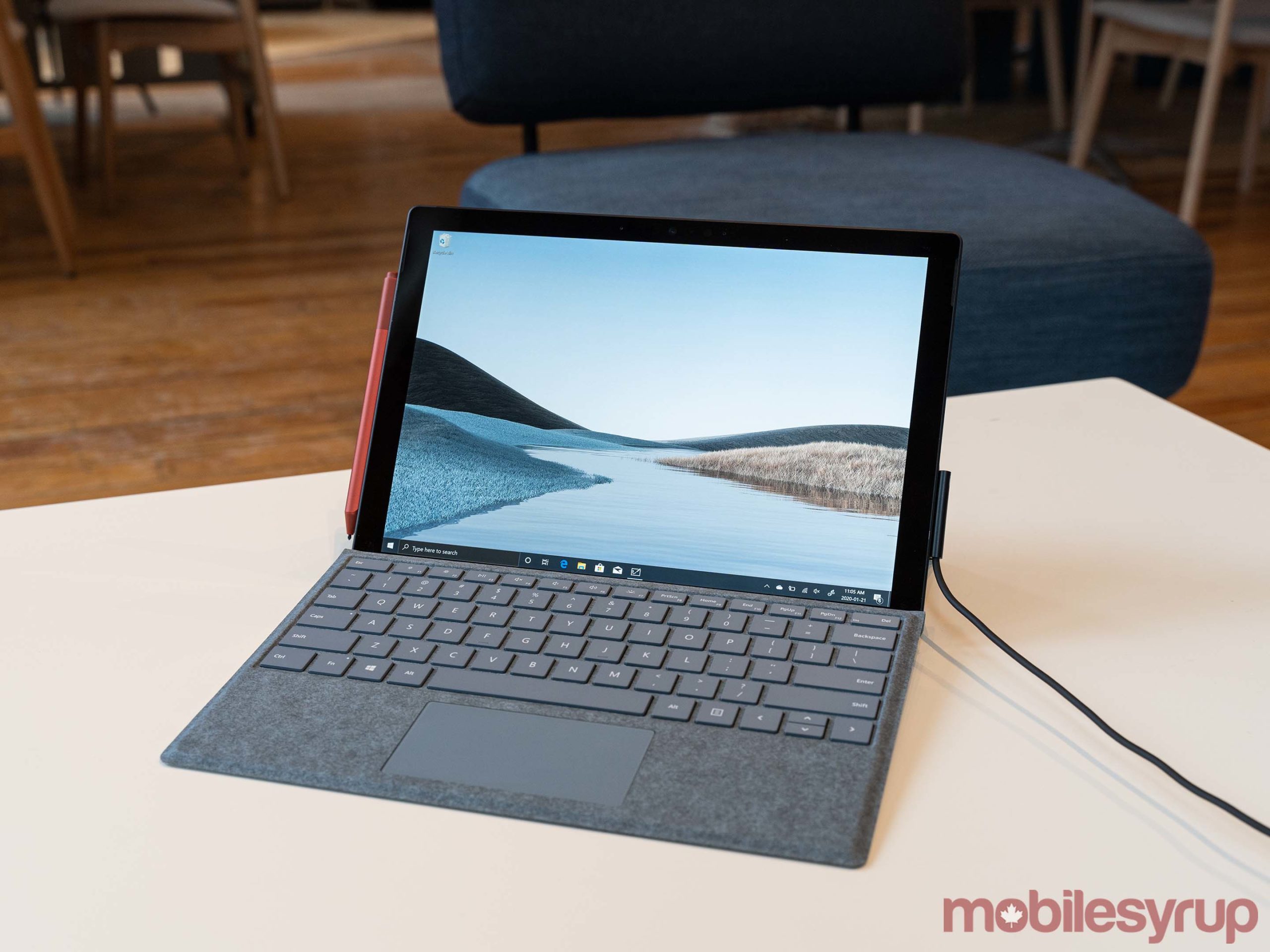
Author’s Note: The review units that Microsoft initially sent to MobileSyrup had some significant issues, which ultimately caused the delay of this review. It started with the Surface Laptop 3, which had several Blue Screens of Death (BSoD), a generic and scarier-than-it-sounds term for the blue error screen Windows displays after a crash takes down the system. The screen shows the error details related to the crash along with a QR code users can scan to perform diagnostics. The BSoDs happened repeatedly and randomly. I was unable to solve the problem, or even determine what caused the crashes in the first place. After resetting the device, updating drivers and even reinstalling Windows, I returned the Laptop 3 to Microsoft.
While waiting for a replacement to arrive, I began testing the Surface Pro 7. It also experienced a BSoD issue, but unlike the Laptop 3, the Pro 7 was unable to boot after the first few crashes. It would BSoD on boot, and I was unable to restore the device.
The second Surface Laptop 3 that Microsoft sent us also had BSoD issues.
However, the replacement devices sent to us in January — the third Laptop 3 and second Pro 7 — worked flawlessly. It’s still unclear what caused the problems in the first place. The Microsoft spokesperson I worked with said that the company hadn’t received reports of similar issues, and as far as I’ve seen, this holds true. Since the BSoD issues were seemingly limited to review units tested by MobileSyrup, and since the replacement devices didn’t exhibit the same issues, I didn’t factor those issues into the review. However, these problems did happen and it may be something worth considering for anyone looking to buy one of the new Surface devices.
Surface Pro 7: Finally some good ports

- Display: 12.3-inch PixelSense display, 2736 x 1824 pixel resolution, 3:2 aspect ratio
- Processor: 10th Gen Intel Core i3-1005G1, i5-1035G4 or i7-1065G7 processor
- Memory: 4GB, 8GB or 16GB LPDDR4x RAM
- Storage: 128GB, 256GB, 512GB or 1TB SSD options
- Dimensions: 292mm x 201mm x 8.5mm
- Weight: i3/i5: 1.70lbs (775g) | i7: 1.74lbs (790g)
- Camera: Windows Hello face authentication camera (front-facing), 5.0MP front-facing camera with 1080p full HD video, 8.0MP rear-facing autofocus camera with 1080p full HD video
- Operating System: Windows 10
- Battery: Up to 10.5 hours
- Connectivity: Wi-Fi 6, Bluetooth 5
- Sensors: Ambient light sensor, Accelerometer, Gyroscope, Magnetometer
- Ports: 1x USB-C, 1x USB-A, 3.5mm headphone jack, 1x Surface Connect port, microSDXC card reader, Surface Type Cover port
- Graphics: i3: Intel UHD Graphics | i5/i7: Intel Iris Plus Graphics
If you liked the Surface Pro 6, you’ll like the Pro 7 too. Microsoft didn’t do much to change things up this year and to be honest, I don’t think it needed to.
The biggest differences you’ll find between the Pro 7 and its predecessor would be the inclusion of a USB Type-C port and Intel’s new 10th Gen CPUs.
There are a few smaller differences as well — the Pro 7 now supports Bluetooth 5.0 and Wi-Fi 6 (802.11ax) and it has a magnetometer now, which can measure the strength, direction or change of a magnetic field.

Microsoft also talked up the Pro 7’s new dual far-field studio microphones, but the Surface Pro 6 also had dual mics and while I’m sure the new mics are better, I didn’t notice a difference.
The Surface Pro 7 still sports the same 12.3-inch PixelSense display and 3:2 aspect ratio. It’s still somewhat difficult to use on your lap. The dimensions are the same, and it’s five or six grams heavier than the Pro 6, depending on which configuration you get.
Speaking of configurations, the Pro 7 now offers a lower base model with an i3, 128GB of storage and 4GB of memory. I can’t speak to the efficacy of the base model since Microsoft provided me with the i7, 16GB RAM and 256GB storage version. Suffice it to say that at the time of writing, you could get the Surface Pro 6 with 128GB of storage, 8GB of RAM and an 8th Gen i5 for $70 less than the i3 Surface Pro 7. Considering how similar the two models are, that would likely be a better choice for penny pinchers.
The Pro 7 lives and dies by its silicon
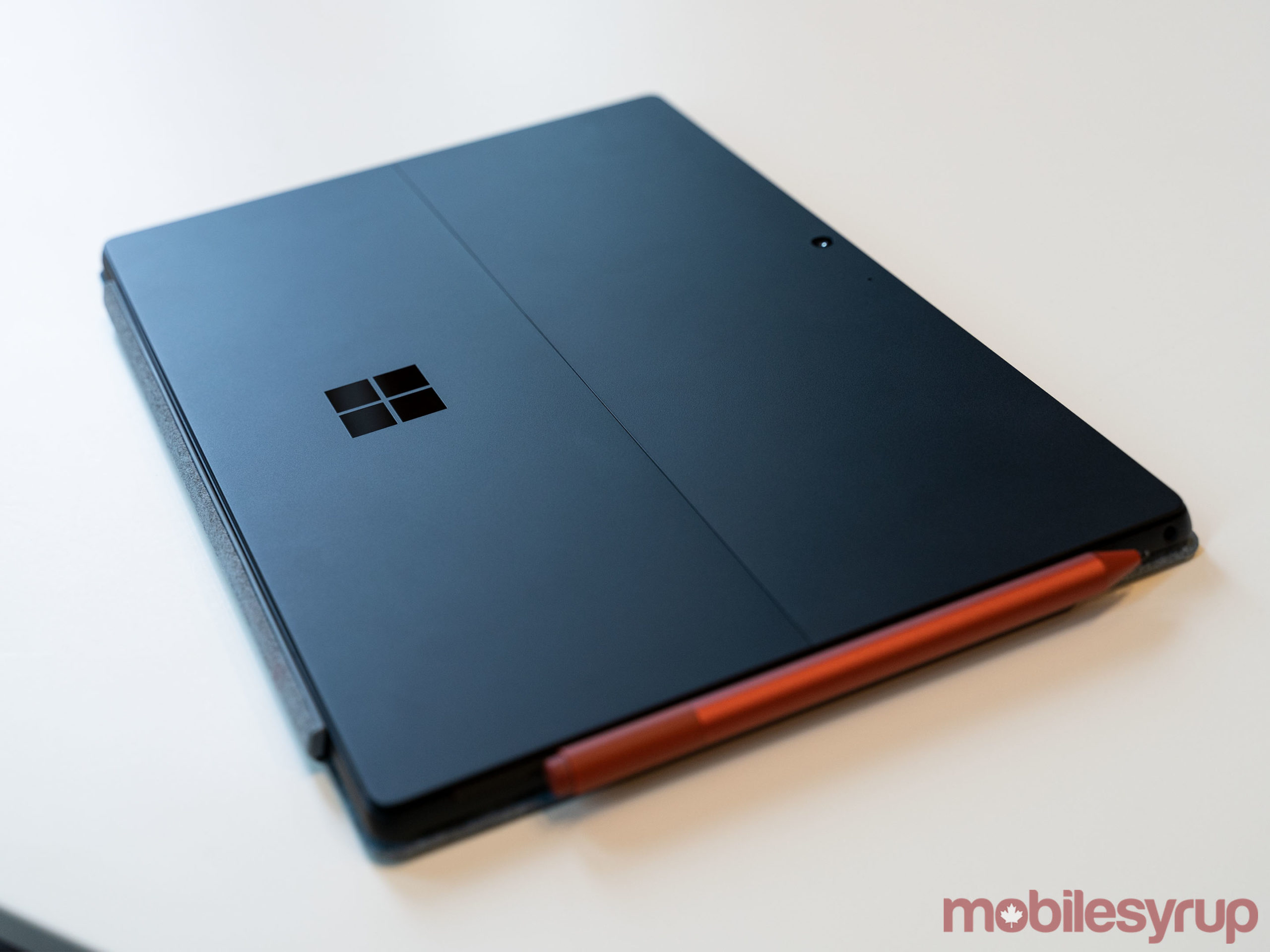
Really, the argument behind getting the Surface Pro 7 is all about the silicon. In my experience, the 10th Gen Intel processor was blazingly fast. The Pro 7 had no problem chewing through my regular workload.
On the average workday, I’ll have at least seven browser tabs open (but usually more), plus Photoshop, Slack and email. I almost always have Adobe’s cloud photo sync running in the background, as well as some music streaming. The Surface Pro 7 didn’t slow down once.
That said, it didn’t perform significantly better than the Surface Pro 6 I tested last year. While I recall experiencing more slowdowns, that’s likely due to the i5 and 8GB of RAM, so comparing the i7 Pro 7 review unit I have this year isn’t exactly fair.
Fast charging is a bigger deal than you think
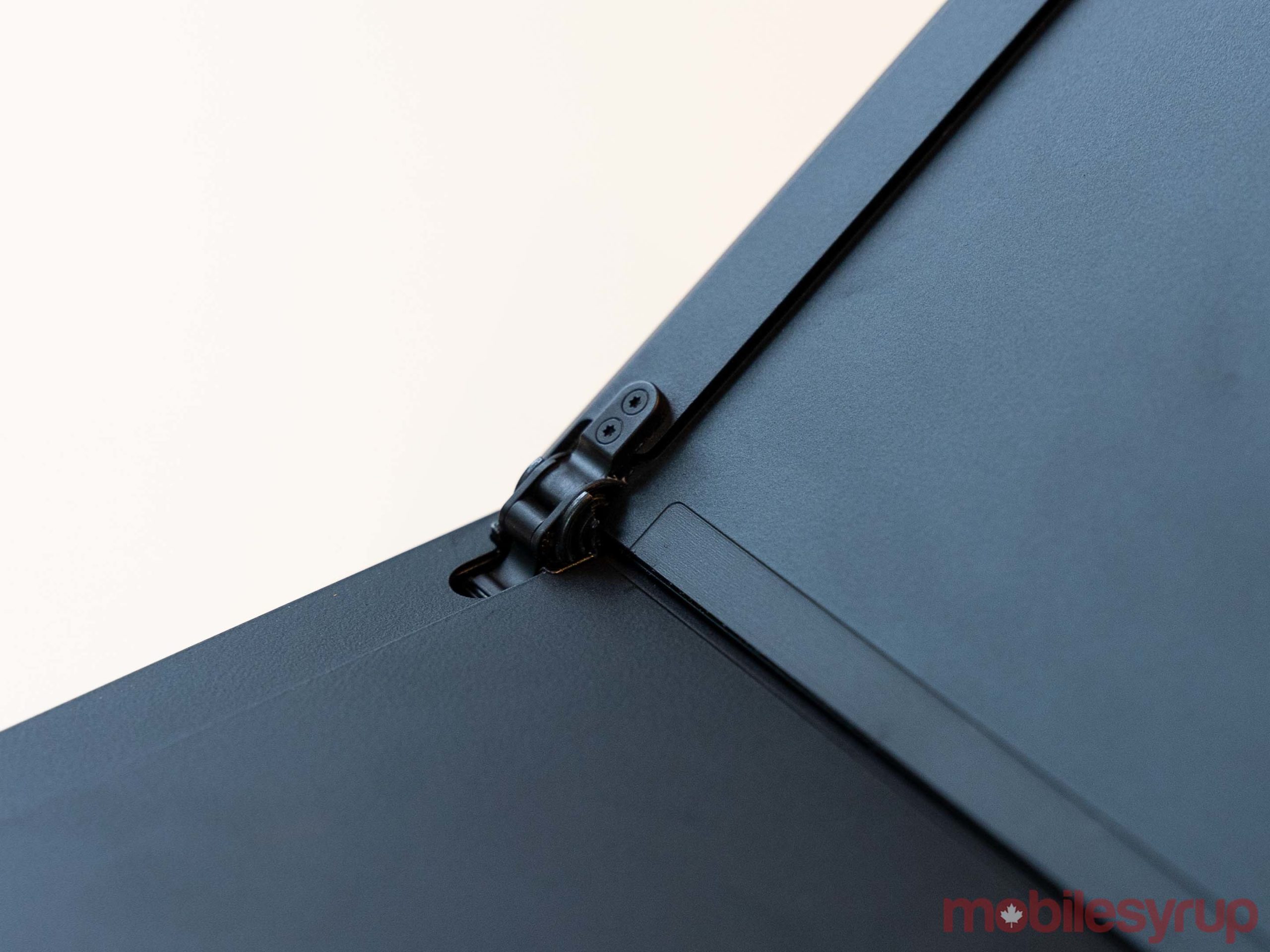
Battery life was a different story. I typically eeked out about four hours of battery life without an issue. It was less than what I got with the Pro 6 and significantly less than Microsoft’s claim of 10.5 hours with “typical device usage.” Outside of using Photoshop, I’d argue that my usage falls under the realm of “typical.”
Thankfully, the addition of fast charging to the Surface Connect Port made juicing up a breeze. I seldom had to leave the Pro 7 — or the Laptop 3, which also has fast charging — on charge throughout the day because about an hour on the charger gave me plenty of power. You can also charge via the USB-C port if you prefer to leave the Surface Connect plug at home.

All that said, if you’re looking for the latest and greatest Surface with excellent performance, then the Pro 7 is the way you want to go.
If you don’t need the latest and greatest, but still want a Surface, pick up a discounted Pro 6, and you’ll have a nearly identical experience. The Pro 7 is an excellent Surface, but it’s still a Surface, with all the good and bad that brings.
Those looking for more of an evolution on the Surface line should look to the new Pro X, which is also available now. However, the Pro X has its own imperfections and isn’t the right device for everyone.
Surface Laptop 3: Everything a Windows laptop should be, but don’t buy it

- Display: 15-inch PixelSense display, 2256 x 1504 pixel resolution, 3:2 aspect ratio
- Processor: AMD Ryzen 5 3580U or AMD Ryzen 7 3780U
- Memory: 8GB or 16GB DDR4 RAM
- Storage: 128GB, 256GB or 512GB removable SSD options
- Dimensions: 339.5mm x 244mm x 14.69mm
- Weight: 3.40lbs (1,542g)
- Camera: Windows Hello face authentication camera (front-facing), 720p HD f2.0 camera (front-facing)
- Operating System: Windows 10
- Battery: Up to 11.5 hours
- Connectivity: Wi-Fi 5, Bluetooth 5
- Sensors: Ambient light sensor
- Ports: 1x USB-C, 1x USB-A, 3.5mm headphone jack, 1x Surface Connect port
- Graphics: Ryzen 5: Vega 9 Graphics | Ryzen 7: Vega 11 Graphics
Note: the above specs are for the 15-inch Surface Laptop 3
For the most part, the story of the Surface Laptop 3 is the same as the Pro 7. Microsoft added some minor upgrades, like the 10th Gen Intel CPUs and USB-C. However, the bigger story with the Laptop 3 is the new 15-inch model.
When Microsoft first unveiled it, I wasn’t impressed. In my experience, larger laptops are too big and heavy. I prefer smaller laptops that I can easily chuck in my backpack and carry around.
However, the 15-inch Surface does a fantastic job of fitting a large, beautiful display into a laptop that doesn’t feel that big. I had no problem sliding it in my backpack, and it didn’t weigh me down like other big laptops. It seemed gigantic at first, but after using it for a few hours, I couldn’t imagine going back to something smaller.
Bigger isn’t always better

Unfortunately, not everything about the bigger Laptop 3 is good. While the smaller 13.5-inch Laptop 3 sports Intel’s new 10th Gen Core CPUs, the bigger Laptop 3 runs on AMD Ryzen. In and of itself, that wouldn’t be a bad thing, but Microsoft opted for older Ryzen silicon that isn’t competitive with the latest from Intel.
For some reason, the ‘Surface Edition’ Ryzen 5 and 7 series chips used in the 15-inch Laptop 3 are based on AMD’s older Zen+ architecture. In other words, the chips don’t use Zen 2, which is the architecture in the company’s latest CPUs that have reached or passed parity with much of Intel’s lineup.
Worse, whether because of the new AMD hardware — which is new territory for Microsoft — or because of something else, the Laptop 3 was especially buggy, above and beyond the BSoD issues mentioned up top.
Bugs I experienced included assets in apps, like icons, not loading in, things like the brightness slider jumping around and changing at random, and weird display calibration.
AMD wasn’t the best choice
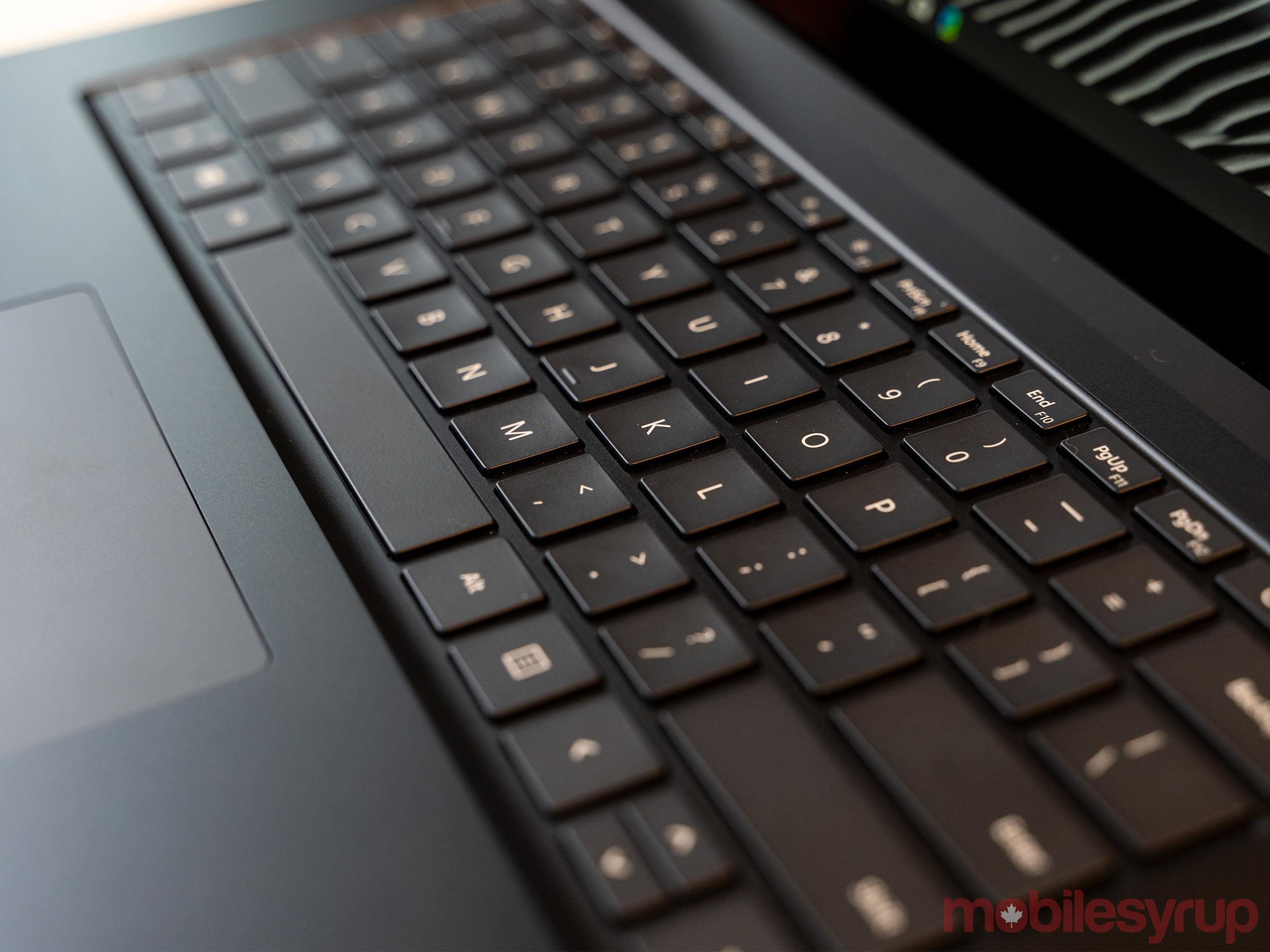
In day to day use, the 15-inch Laptop 3 performs closer to 8th Gen Intel standards rather than competing with Intel’s latest 9th Gen (targeted at desktops) or 10th Gen (targeted at mobile computing devices) chips.
In most of my use, I found that the 15-inch laptop performed admirably, all things considered. Microsoft initially sent me the Ryzen 5, 16GB RAM model, but after the issues, replaced it with another Ryzen 5 model with only 8GB of RAM. The third model was another Ryzen 5 with 16GB of RAM. I felt that the 8GB of RAM was restricting, but most of my performance issues stemmed from the processor itself.
When I say performed admirably, I should say that it ran at about the same level as other laptops I reviewed this year running 8th Gen Intel chips. I felt the AMD processor the most when editing photos, where it often seemed to chug. Since creators will likely want the bigger 15-inch display, anyone looking to do serious photo or video editing should avoid the AMD version 15-inch Laptop 3.
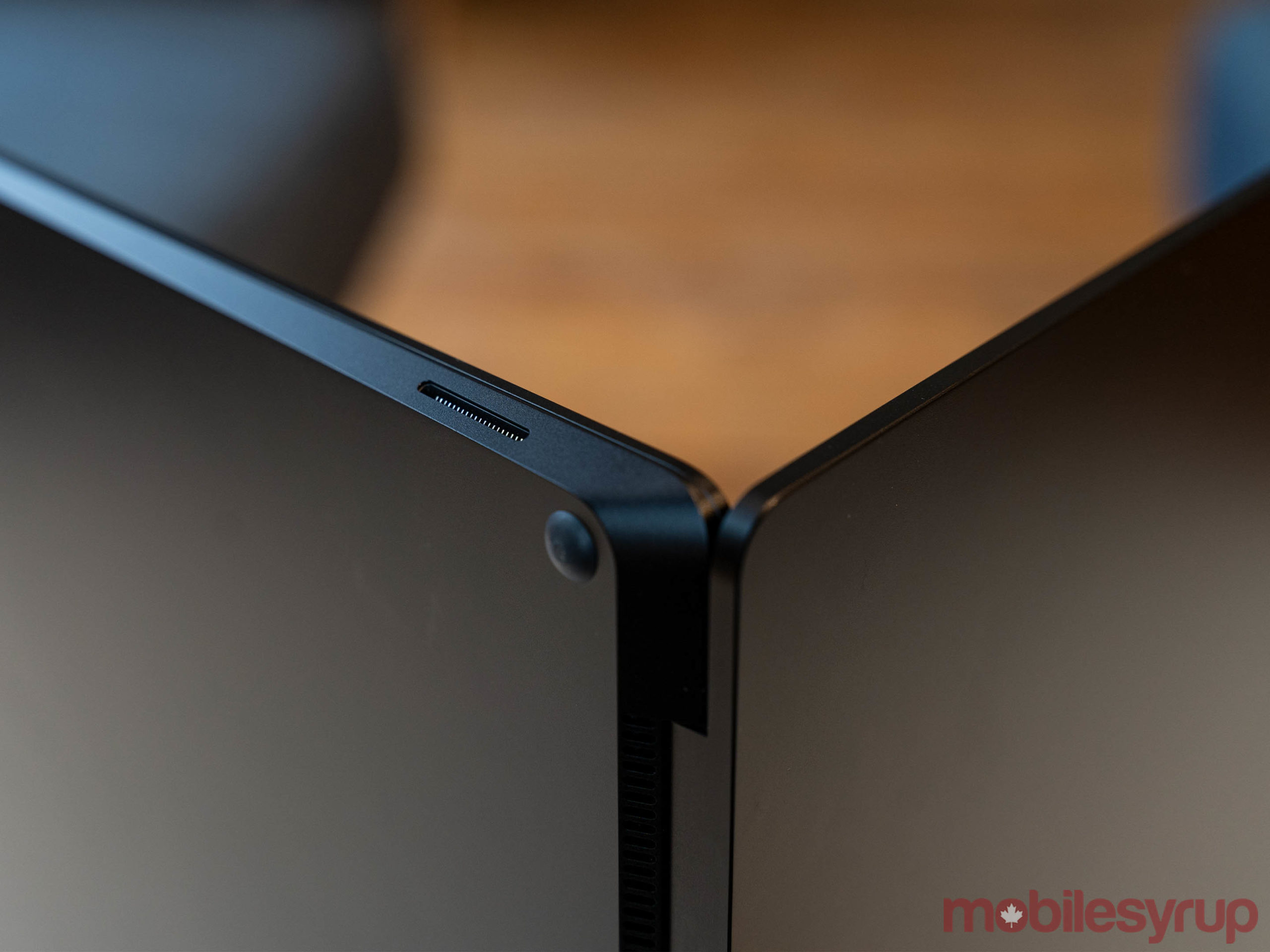
That said, the slightly faster Ryzen 7 version would likely perform better, but not enough to warrant the steep increase in price. It’s worth noting, however, that there’s an enterprise version of the 15-inch Laptop 3 that does run the new Intel 10th Gen chips. The base version, which sports an i5, 8GB of RAM and 128GB of storage, is only $170 more than the equivalent AMD variant.
There’s also the 13-inch Surface Laptop, which only comes with 10th Gen Intel CPUs. I’d recommend one of those over the 15-inch, as nice as it is, for better performance and stability alone.
Decent battery and screen a saving grace

One area where the 15-inch Surface Laptop 3 did shine was the battery life. With a laptop of this size, it’s easy to squeeze in a large battery and I often found myself only getting five to six hours of usage from it.
While some may scoff at that, it matched most of the Windows laptops I tested this year, so I was quite happy with it.
The screen is also magnificent. Spec-wise, it’s almost identical to the 13-inch display, which is the same as the one on last year’s Laptop 2. The only difference with the 15-inch, aside from the size, is a small bump in resolution.
That said, I quite enjoyed using it for work, as it gives plenty of real estate for apps and programs. However, the display isn’t suited for gaming, as most games are designed for a 16:9 aspect ratio, not a 3:2. You can still play games if you don’t mind some extreme letterboxing.
Speaking of games, you may think the Surface Laptop 3 would handle them well with its Vega graphics. You’d be wrong. Depending on whether you get the Ryzen 5 or 7 version, you’ll get Vega 9 or 11 graphics. It’ll run games, but not well. Ultimately, if you’re looking to game, you’ll find a better experience elsewhere.
So close and yet so far
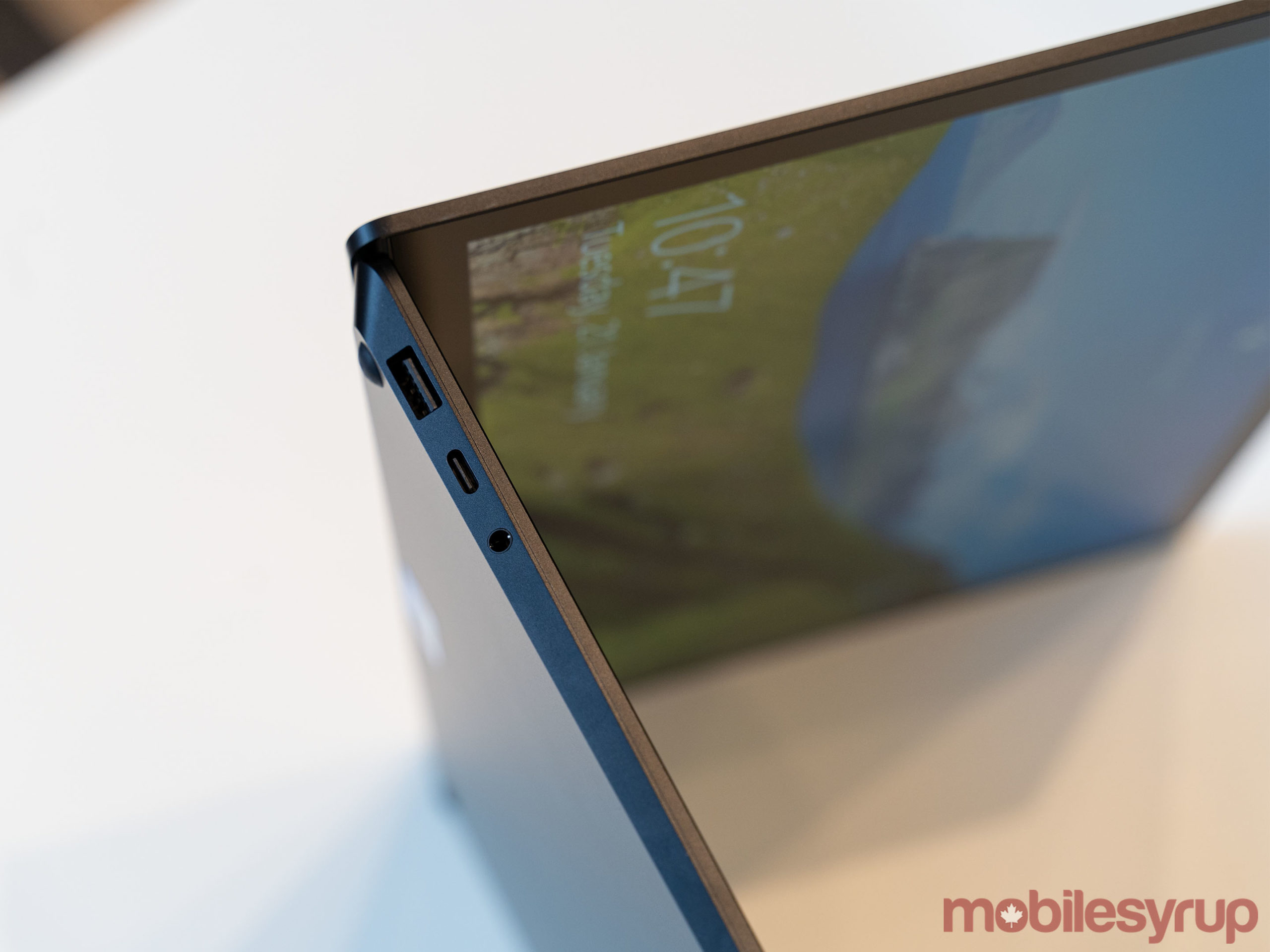
Despite the incredible number of issues I had with both the Pro 7 and the 15-inch Laptop 3, I must say that these are the best computers Microsoft has made in a long time.
The Surface Pro 7 is an iteration on Microsoft’s excellent two-in-one line. It’s a wonderful device, especially if you like the form factor. While the changes this year are minimal, the spec bump and USB-C are welcome additions that improve the experience.
And the Surface Laptop 3 is, as always, the epitome of excellent design. Whether you go for the Alcantara or the metal (the black is a fingerprint magnet), you’re getting a well-built device.
Unfortunately, I still find it difficult to recommend these devices. For all the good, Microsoft missed on some important basics. For the Laptop 3, it’s hard to look past the performance problems and issues with the 15-inch variant. The Pro 7, however, is a solid option, but if you’re coming from last year’s Surface 6, you should probably just stick with it.
And as always, the Surface devices are quite expensive. The Laptop 3 starts at $1,349 and the Pro 7 at $999 (not including the Type Cover and Pen, which are extra).
With all this in mind, you’re likely better off with a Windows laptop from another manufacturer. Dell, HP, Lenovo and others make excellent, powerful computers with plenty of ports, new CPUs and none of the shortcomings of Microsoft’s Surface line.
That said, few other manufacturers match the solid build quality, excellent design and fantastic keyboards available on from Microsoft’s Surface line. If you’re a Surface diehard, these devices are great — issues aside. Those who want the most for their dollar should look elsewhere.
MobileSyrup may earn a commission from purchases made via our links, which helps fund the journalism we provide free on our website. These links do not influence our editorial content. Support us here.


